To preserve natural oils in your handmade soap, you'll need to implement five key methods. Start by adding natural antioxidants like Vitamin E and rosemary extract at 0.5-1% of total soap weight. Store your soaps in cool, dark spaces between 60-80°F using breathable containers. Infuse herbs through cold steeping techniques, maintain proper temperature control with good airflow, and stabilize essential oils using carrier oil dilution. These fundamental techniques are just the beginning of mastering soap preservation.
Antioxidant Selection and Application Methods
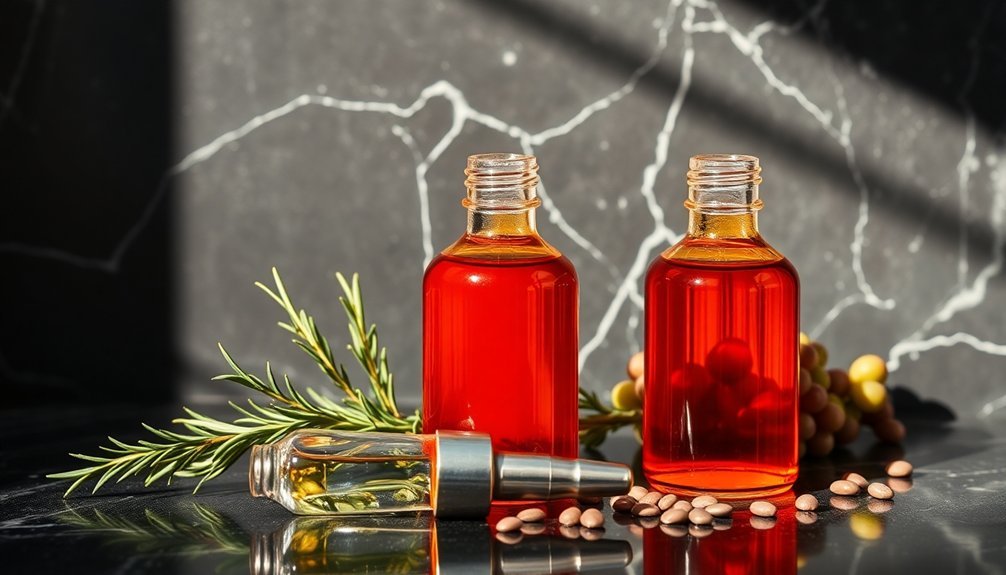
When crafting homemade soap, selecting the right antioxidant is crucial for preventing rancidity and extending your product's shelf life.
You'll want to focus on natural preservatives like Vitamin E and rosemary extract, which you can add at 0.5% to 1% of your total soap weight.
To maximize effectiveness in your oil formulations, blend your chosen antioxidants with the oils at the start of your soap making process. This guarantees even distribution throughout your batch.
Vitamin E (T-50) works by neutralizing free radicals that cause oxidation, while rosemary extract helps prevent discoloration and maintains your soap's appearance over time.
Remember to match your antioxidant choice to your specific oil blend, as different oils have varying oxidation rates.
This targeted approach will give you the best results in preserving your soap naturally.
Optimal Storage Conditions for Oil-Based Soaps
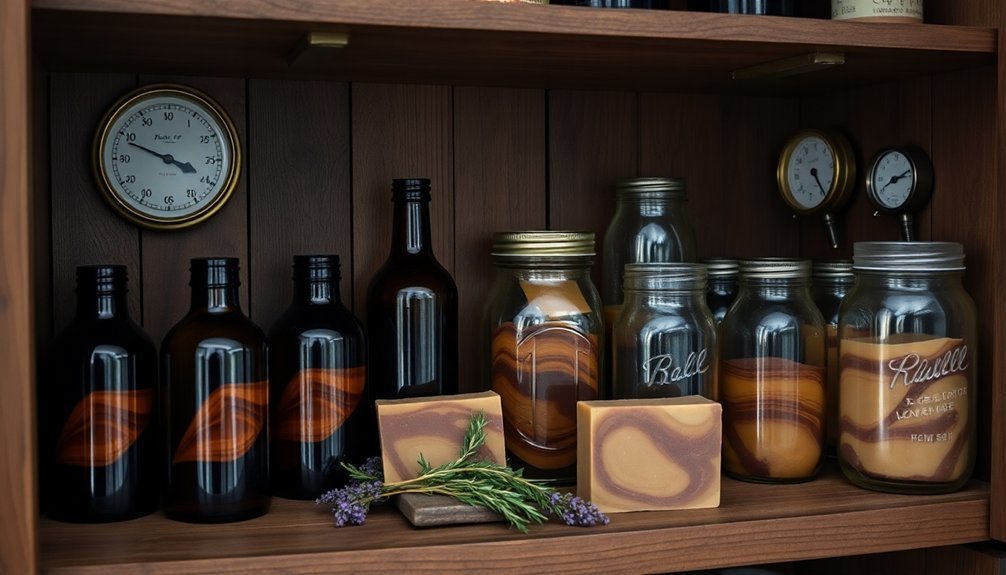
Since proper storage greatly impacts your soap's longevity, maintaining the right environment is crucial. Store your oil-based soaps in a cool, dark space where temperatures stay between 60°F to 80°F to prevent oxidation and rancidity.
Store handmade soaps in cool, dark places between 60-80°F to maximize their shelf life and prevent degradation.
You'll want to use airtight containers or breathable materials like muslin as natural preservative methods to protect your soap's quality.
- Place soaps on wire racks or trays to guarantee proper air circulation, allowing residual moisture to evaporate.
- Monitor humidity levels in your storage area to prevent mold growth, especially if you're using natural additives.
- Check regularly for signs of discoloration or unusual odors that might indicate spoilage.
Remember to keep your soaps away from direct sunlight and high-moisture areas, as these conditions can considerably reduce their shelf life and effectiveness.
Natural Extract Infusion Techniques
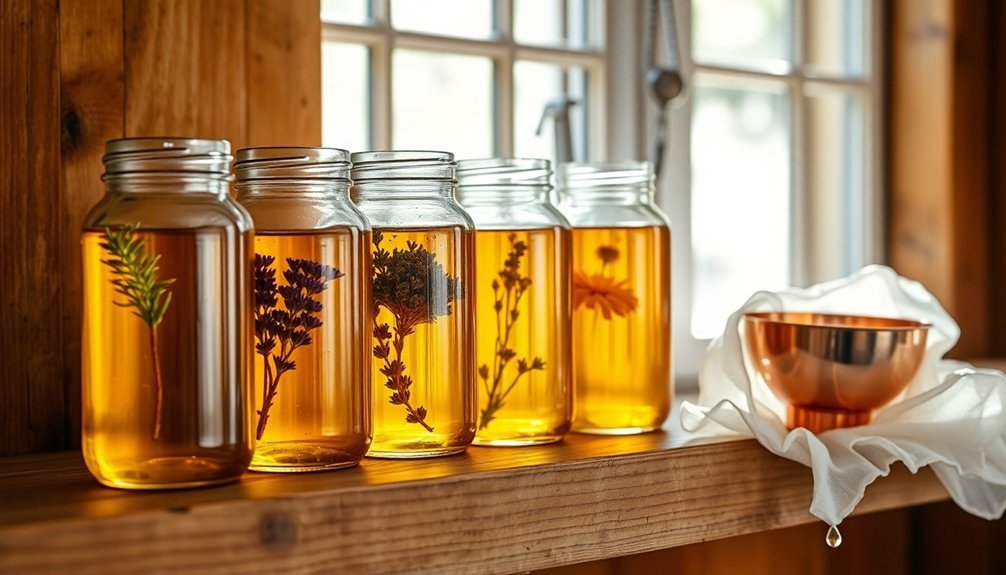
Natural extract infusions serve as powerful allies in extending your soap's shelf life through entirely organic means.
You'll find that incorporating antioxidants like rosemary and vitamin E into your carrier oil creates a robust preservation method that fights rancidity effectively.
To create your natural extract infusion, you've got two main options. You can either steep dried herbs in your carrier oil at low temperatures for several hours, or try the cold infusion technique.
With cold infusion, you'll combine your herbs with oil in clean containers and let them rest in a warm, dark place for weeks, allowing natural compounds to transfer gradually.
For maximum soap quality, consider combining different infused oils with natural antioxidants.
Always store your preparations in clean, dark glass containers to maintain their protective properties.
Temperature Control and Environmental Factors
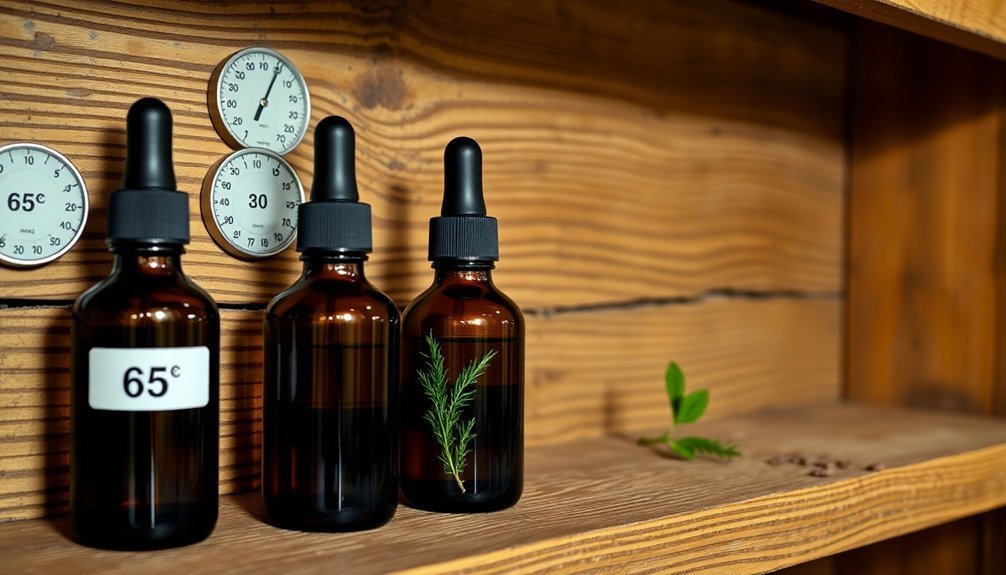
The success of your soap's preservation largely depends on maintaining proper environmental conditions during storage.
You'll need to focus on temperature control and monitor environmental factors carefully to prevent rancidity and protect essential oils from degradation.
Keep your storage area between 60°F to 80°F and guarantee proper air circulation to maximize your soap's shelf life.
Here are the critical storage requirements for your soap:
- Store bars in cool places with minimal humidity to prevent mold growth and maintain quality.
- Choose dark locations away from direct sunlight to protect sensitive ingredients.
- Use wire racks or trays to enhance airflow around soap bars during storage.
Regular monitoring of your storage area's conditions will help prevent temperature fluctuations and humidity issues that could compromise your soap's integrity.
Essential Oil Stabilization Strategies
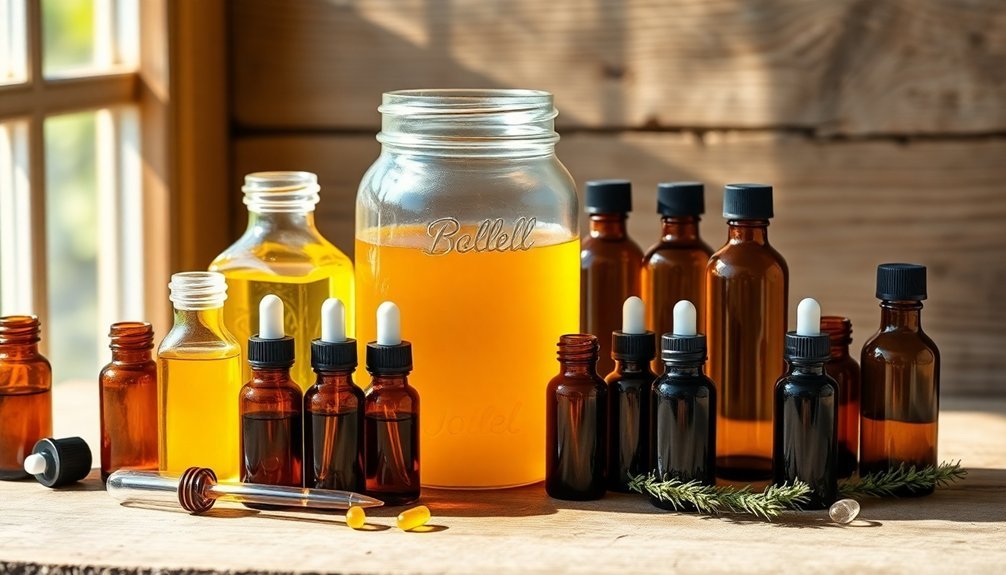
When working with essential oils in soap making, proper stabilization techniques become essential for maintaining their therapeutic properties and extending shelf life.
You'll need to incorporate natural preservatives like Vitamin E and carrier oils to protect your essential oils from oxidation and degradation.
To enhance stability, dilute your essential oils in carrier oils before adding them to soap products. This creates a protective buffer against environmental factors that can diminish their effectiveness.
Choose blends with stable oils like lavender or cedarwood as your base, and store all ingredients in dark, airtight containers to prevent premature evaporation and degradation.
Don't skip the critical 4-6 week curing period. This allows for proper evaporation of excess moisture, reducing the risk of microbial growth while preserving the integrity of your essential oils.
These steps guarantee your natural soaps maintain their therapeutic benefits longer.
Frequently Asked Questions
How Do You Harden Soap Naturally?
You'll get harder soap by increasing superfat to 5-6%, using coconut or palm oils, adding natural waxes, and curing for 4-6 weeks. Higher lye content helps too, but measure carefully.
How Do You Make Essential Oils Last Longer in Soap?
You'll make essential oils last longer in soap by adding antioxidants like Vitamin E, using high flash point oils, blending multiple oils together, storing bars in cool dark places, and allowing proper curing time.
Which Preservative Is Best for Oil-Based Products?
You'll find Vitamin E oil (T-50) is your best choice for oil-based products at 0.5-1%. It's effective, natural, and works alongside Rosemary Oleoresin Extract (0.1-0.5%) for maximum preservation benefits.
What Is the Best Way to Preserve Soap?
You'll best preserve your soap by adding natural antioxidants like Vitamin E, maintaining a 5-6% superfat ratio, storing it in cool, dry places with good airflow, and avoiding fresh ingredients that cause spoilage.
In Summary
You'll get the most out of your natural soaps by combining multiple preservation methods. Store your soaps in airtight containers away from sunlight, maintain consistent room temperature, and use natural antioxidants like vitamin E and rosemary extract. When infusing oils and extracts, don't forget to monitor temperature carefully. With these strategies, you'll extend your soap's shelf life while keeping it free from synthetic preservatives.





Leave a Reply